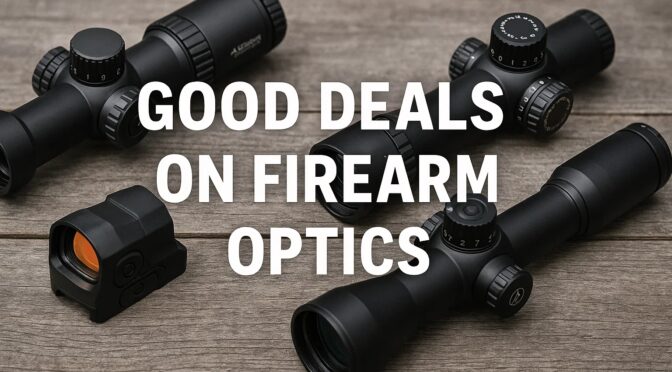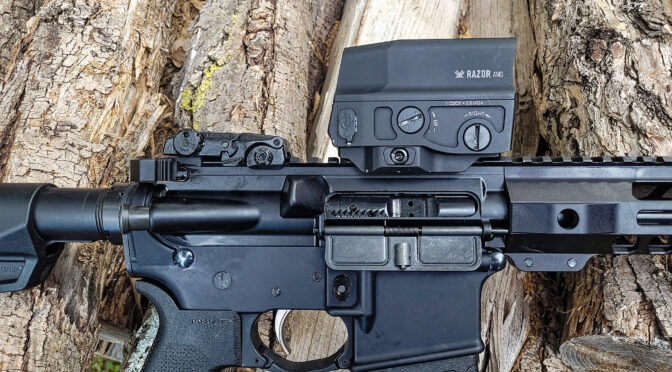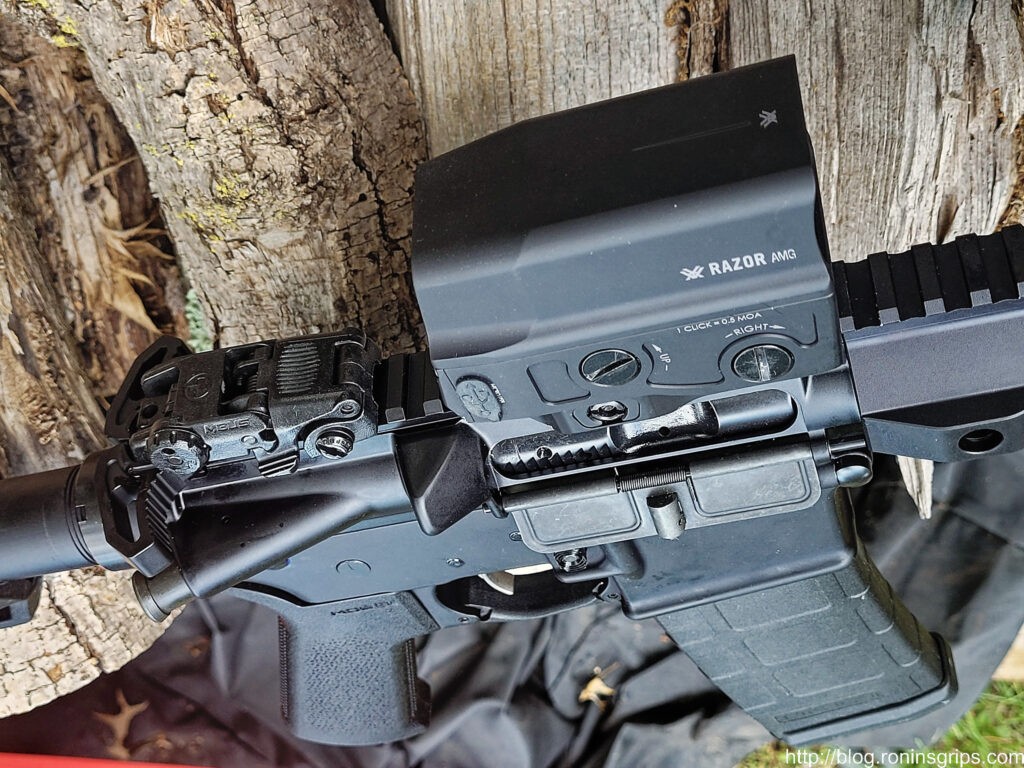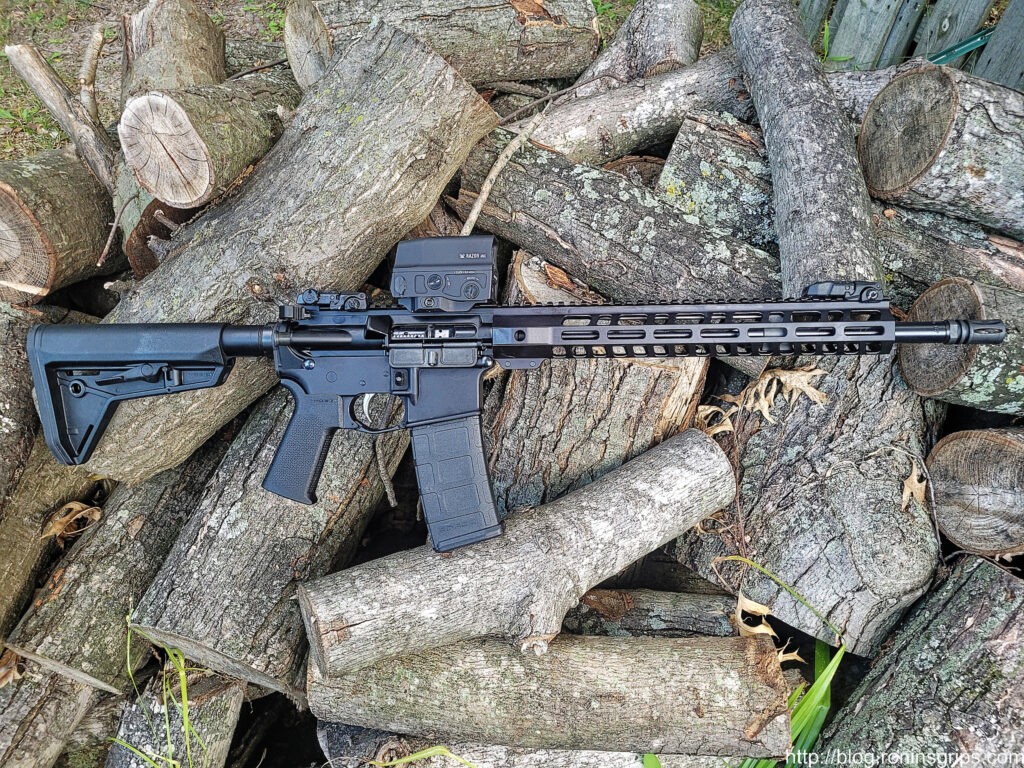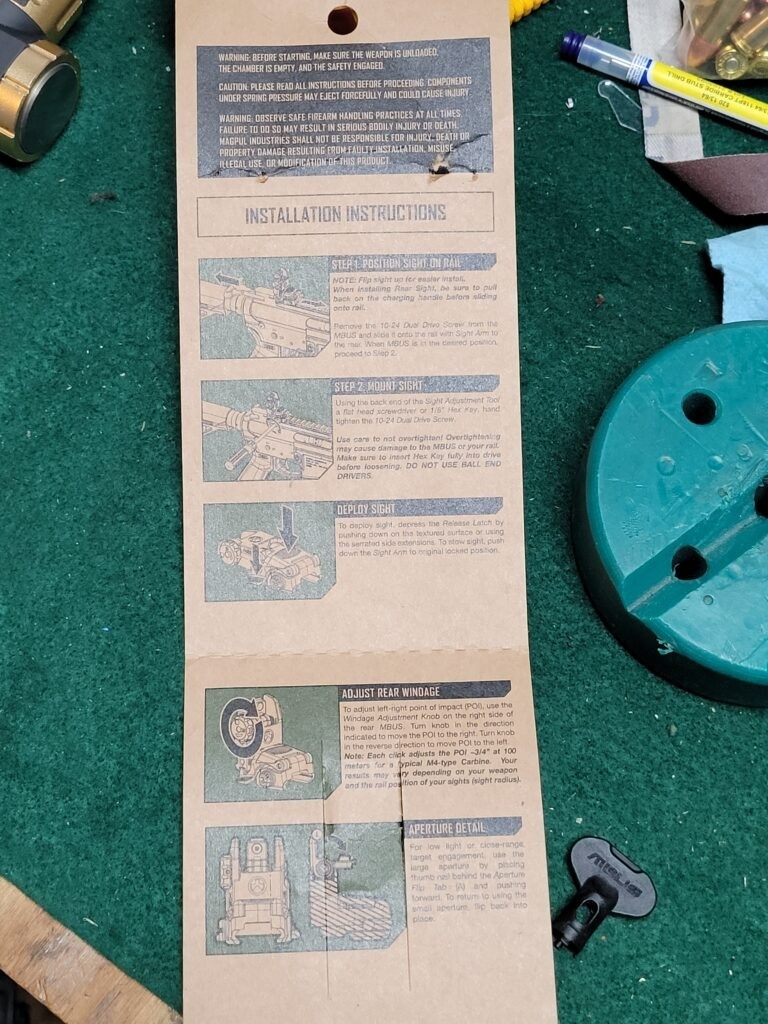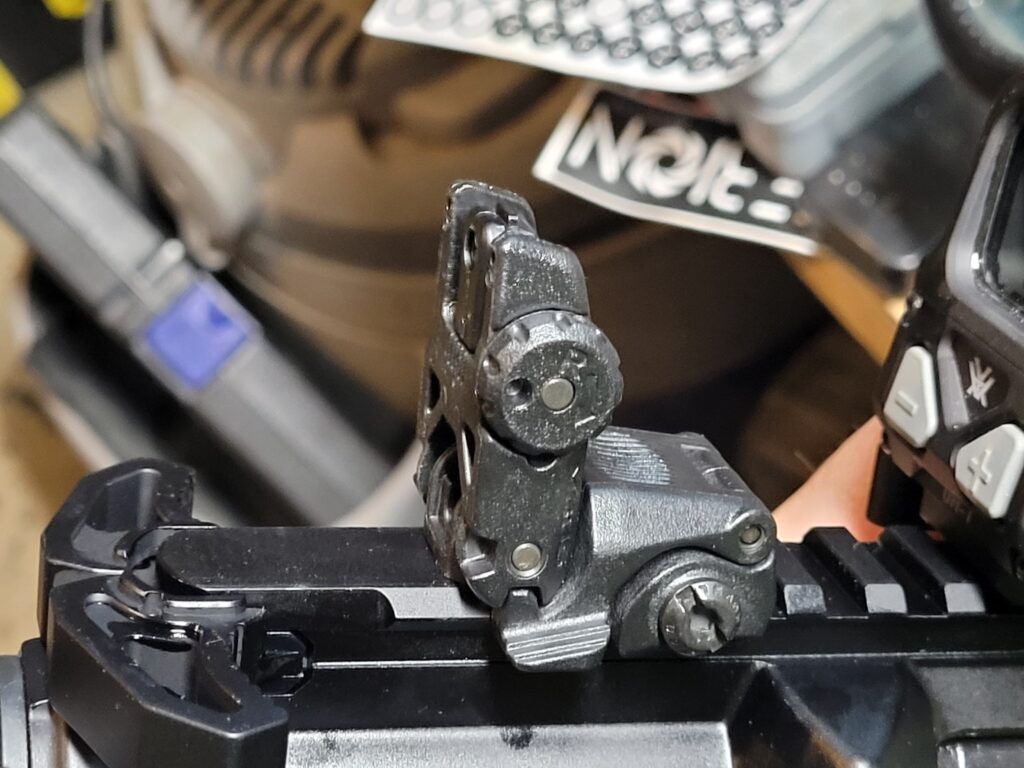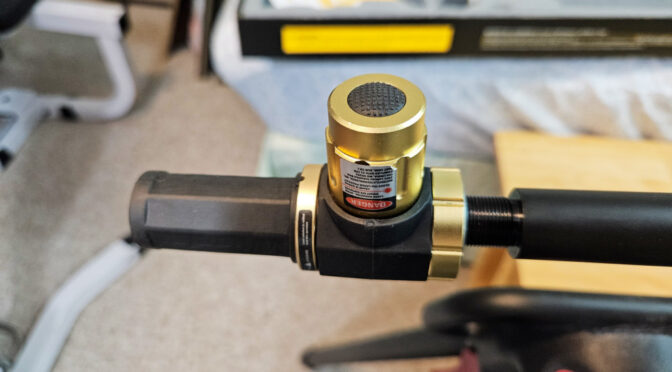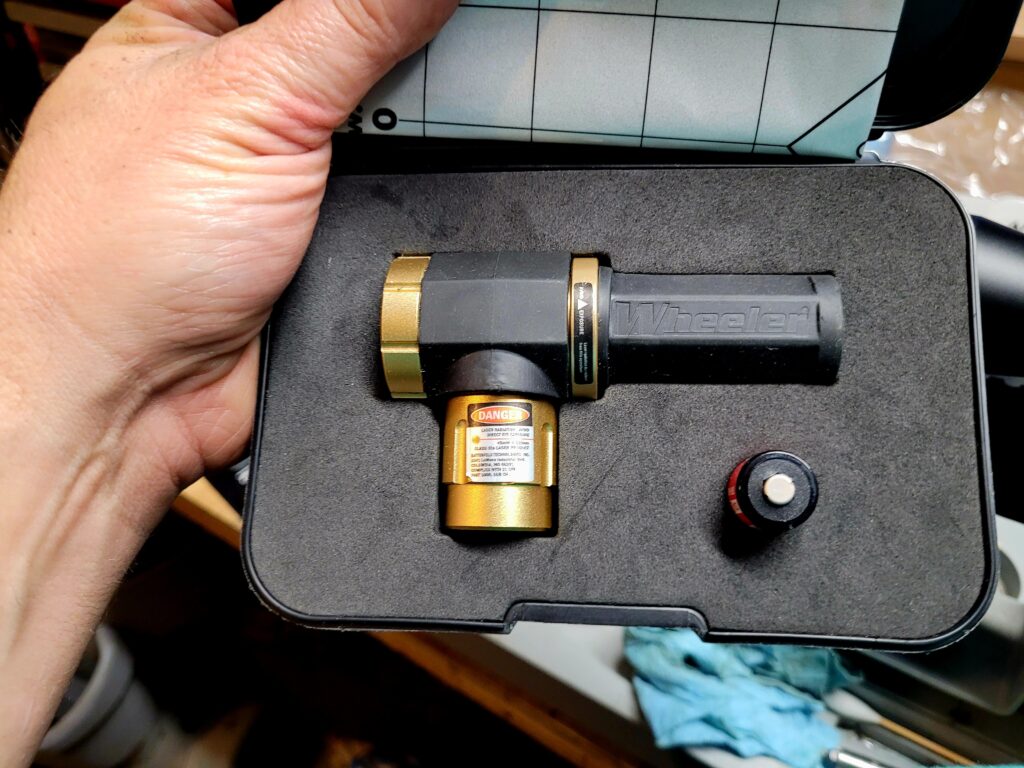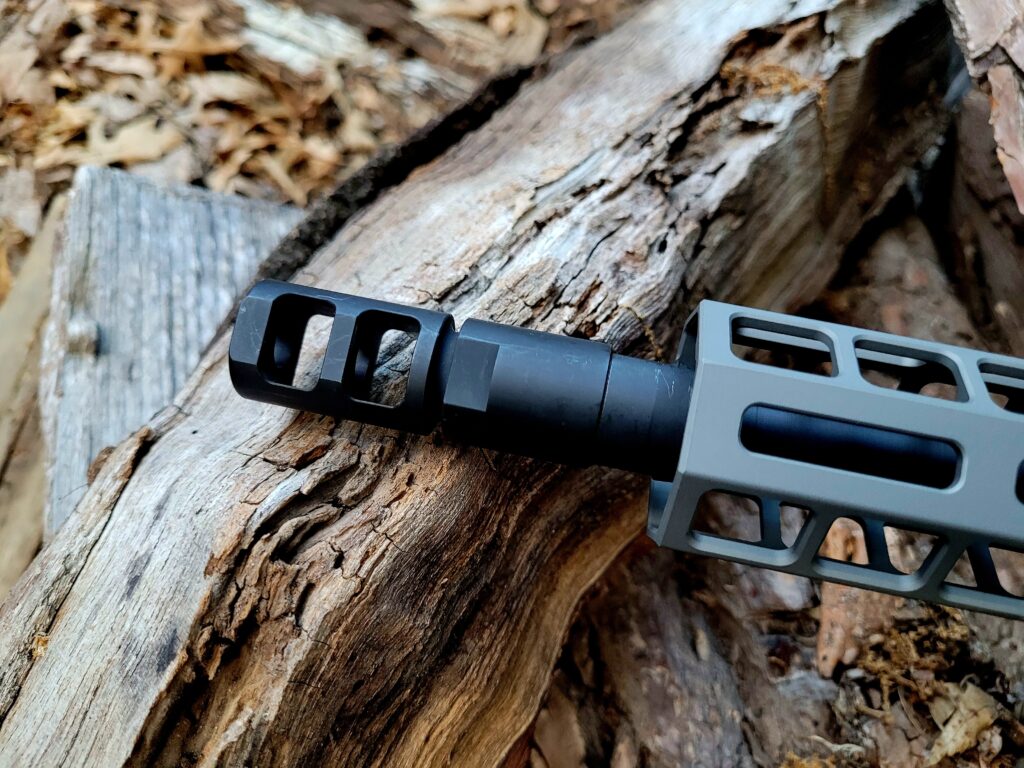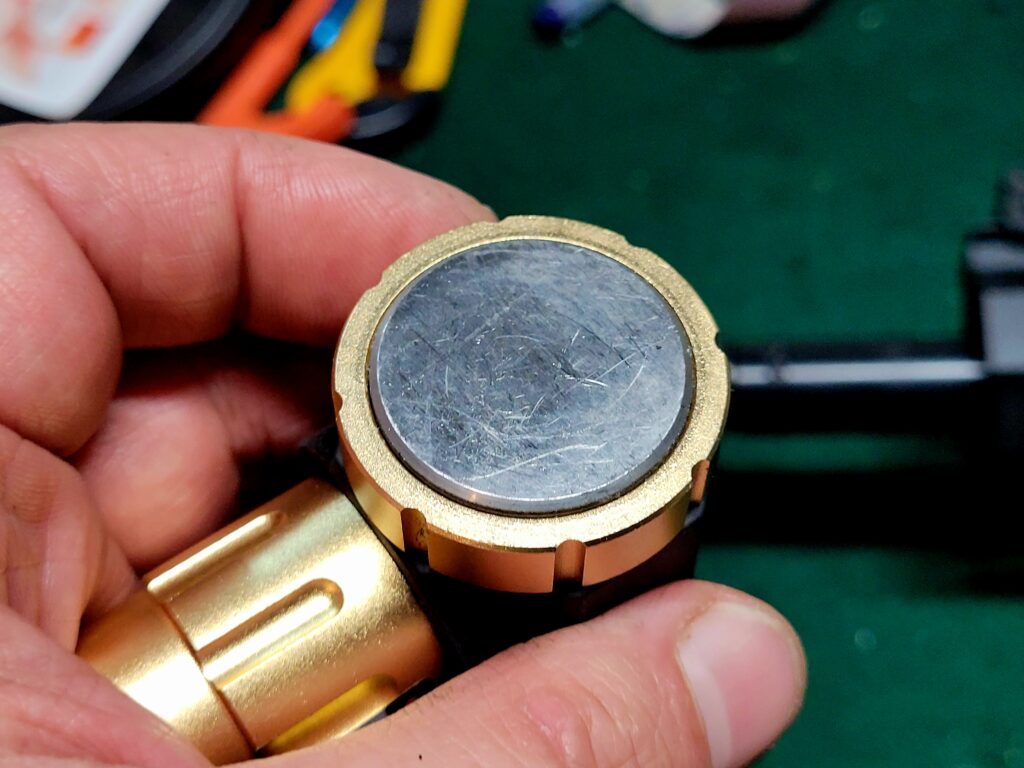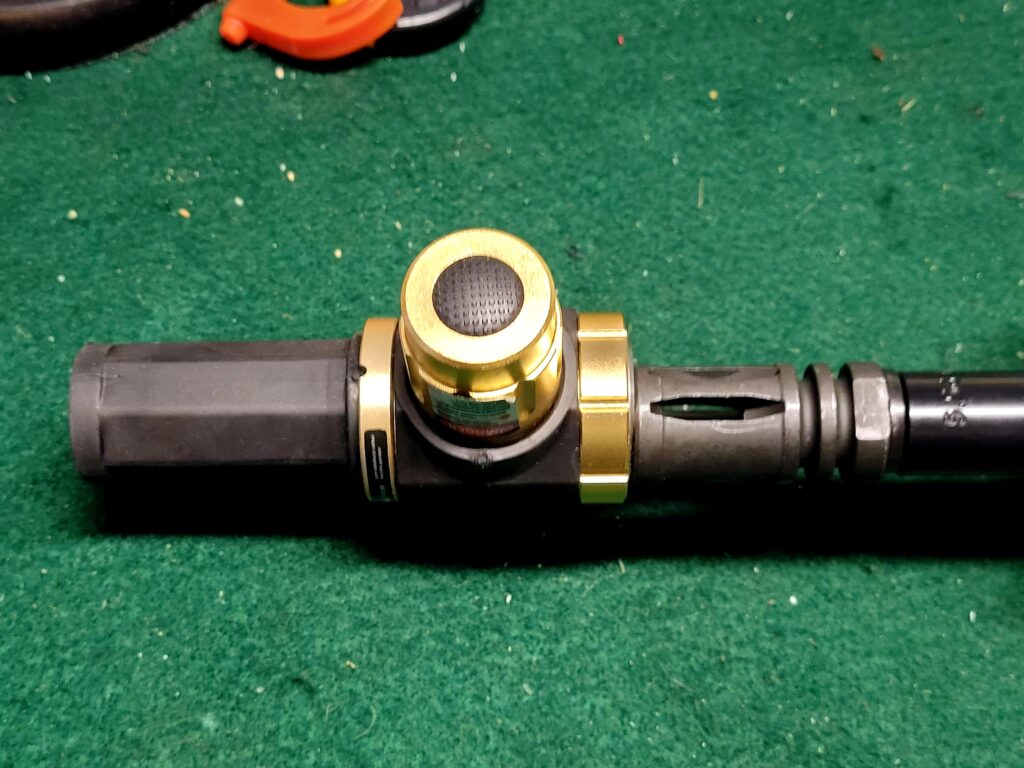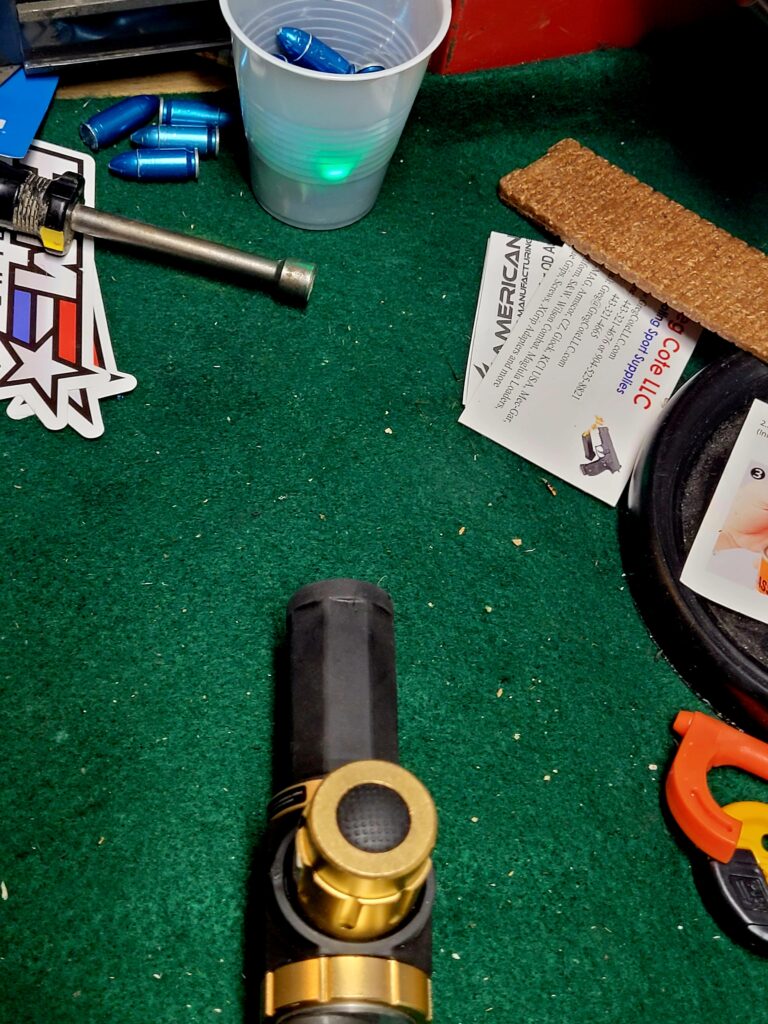The U.S. market for pistol-mounted Micro Red Dot Sights (MRDS) has transitioned from a niche, early-adopter segment to a phase of explosive, mainstream growth. This expansion is primarily fueled by the widespread adoption of “optics-ready” slide configurations by nearly every major handgun manufacturer, a move that has significantly lowered the cost and complexity for consumers to mount an MRDS.1 Once considered an aftermarket accessory for enthusiasts and competitors, the MRDS is now increasingly viewed as a primary sighting system for defensive, duty, and recreational handguns. The broader electro-optics market, valued in the tens of billions of dollars with a projected compound annual growth rate (CAGR) of over 6%, reflects the immense commercial momentum behind this technological shift.3
This report, based on a comprehensive analysis of consumer and prosumer sentiment from high-traffic U.S. online communities, identifies a clear stratification of the MRDS market into three distinct tiers. Tier 1 (Premium & Duty-Grade) is defined by an uncompromising focus on durability and reliability, where brands like Trijicon and Aimpoint have historically set the performance benchmark. Tier 2 (High-Performance Prosumer) represents the most dynamic and competitive segment, where brands, most notably Holosun, offer a compelling balance of proven durability, advanced features, and strong value. Tier 3 (Entry-Level/Value) caters to price-conscious consumers, a segment where features once considered novel, such as motion-activated illumination, are rapidly becoming standard expectations.
Several key market trends are shaping the competitive landscape. First is the decisive shift toward enclosed-emitter designs for any serious-use application, driven by consumer demand for all-weather reliability and protection from debris.3 Second is the ongoing battle over mounting footprint standards (e.g., RMR, RMSc, ACRO), which creates consumer friction and a secondary market for adapter plates.6 Finally, the most significant disruptive force is the rise of products perceived as “durable enough” while offering a superior feature set and value proposition. This has created intense competition between established duty-grade brands and aggressive new entrants, fundamentally altering consumer expectations and eroding the market share of legacy products that have been slow to innovate.6
The following table summarizes the market sentiment analysis for the top 20 MRDS models, providing a quantitative and qualitative snapshot of the current competitive landscape.
Key Table: Top 20 Micro Red Dot Sights – Market Sentiment Analysis
| Rank | Model | Emitter Type | Footprint | Total Mention Index | % Positive Sentiment | % Negative Sentiment | Key Positive Themes | Key Negative Themes |
| 1 | Trijicon RMR Type 2 | Open | RMR | 100.0 | 85% | 15% | “Bombproof” durability, duty-proven, holds zero, brand reputation. | Bottom-load battery, high price, strong blue tint, small window. |
| 2 | Aimpoint ACRO P-2 | Enclosed | ACRO | 95.2 | 92% | 8% | Ultimate durability, enclosed reliability, exceptional battery life, clear dot. | Very high price, “mailbox” size/aesthetics, requires specific mounts. |
| 3 | Holosun 509T X2 | Enclosed | Proprietary (ACRO-like) | 91.5 | 90% | 10% | Enclosed durability, titanium housing, great features (Solar, MRS), value vs. ACRO. | Requires adapter plate, adds height, “Made in China” concerns. |
| 4 | Trijicon SRO | Open | RMR | 88.7 | 88% | 12% | Massive window, excellent for competition, clear glass, top-load battery. | Perceived fragility, less durable than RMR, not ideal for duty/carry. |
| 5 | Holosun EPS Carry | Enclosed | RMSc (Modified) | 85.1 | 94% | 6% | Enclosed emitter for CCW, low deck height for co-witness, compact size. | Higher price than open emitters, some desire for clearer glass. |
| 6 | Holosun 507C X2 | Open | RMR | 82.4 | 93% | 7% | Incredible value, great features (Solar, MRS, Shake Awake), side-load battery. | Slight lens tint, auto-brightness can be dim, not as durable as RMR. |
| 7 | Leupold Deltapoint Pro | Open | DPP | 78.9 | 70% | 30% | Very large, clear window with minimal tint, top-load battery. | Durability concerns, poor/inconsistent battery life, tall body. |
| 8 | Holosun 508T X2 | Open | RMR | 75.5 | 91% | 9% | Titanium housing, more durable than 507C, all the same great features. | Higher price than 507C for durability upgrade. |
| 9 | SIG Sauer Romeo-X Compact | Enclosed | RMSc | 72.8 | 89% | 11% | Very low deck for co-witness, excellent glass clarity, well-integrated for SIG pistols. | High price, early QC issues with battery cap. |
| 10 | Holosun 407K/507K X2 | Open | RMSc (Modified) | 70.1 | 95% | 5% | Benchmark for micro-compacts, great value (407K), feature-rich (507K). | Requires adapter plate for some pistols (e.g., Hellcat). |
| 11 | Steiner MPS | Enclosed | ACRO | 68.4 | 75% | 25% | Good glass, large window, robust build, cheaper than ACRO P-2. | Poor battery life compared to competitors, early QC/reliability issues. |
| 12 | Vortex Defender-CCW | Open | RMSc | 65.0 | 65% | 35% | Excellent warranty/customer service, good value, durable for the price. | Early models had flicker/long auto-off; lingering negative perception. |
| 13 | Trijicon RMR HD | Open | RMR | 63.3 | 90% | 10% | Large window, RMR durability, top-load battery, improved auto-brightness. | Extremely high price. |
| 14 | Holosun 407C X2 | Open | RMR | 60.5 | 96% | 4% | Best value on the market, all essential features (Solar, Shake Awake), simple dot. | Slight lens tint (minor complaint). |
| 15 | Swampfox Justice II | Open | RMR | 55.8 | 80% | 20% | Very large window for the price, good feature set, solid value. | Perceived lower durability, minor QC complaints (parallax, screws). |
| 16 | Primary Arms Classic Mini | Open | RMR | 52.1 | 78% | 22% | Extremely low price from a reputable brand, good warranty. | Lacks features (Shake Awake), “mushy” adjustments, minor fitment issues. |
| 17 | C&H Precision COMP | Open | RMR | 49.5 | 75% | 25% | Large SRO-style window at a budget price, good feature set. | Questions on long-term durability, glass clarity not on par with premium. |
| 18 | Bushnell RXC-200 | Open | RMSc | 46.2 | 70% | 30% | Rugged build, very low profile, crisp dot, affordable. | Auto-brightness only, no user controls, not feature-rich. |
| 19 | Viridian RFX35 | Open | RMR | 43.8 | 65% | 35% | Large window, crisp green dot, low price. | Bottom-load battery, questions on holding zero and durability. |
| 20 | Gideon Optics Alpha | Open | RMR | 40.1 | 70% | 30% | Surprisingly good quality for the price, crisp reticle for astigmatism. | Fixed circle-dot reticle, newer brand with unproven track record. |
Click on the below to download an Excel file with the above table’s data:
Section 2: The Modern MRDS Market Landscape
2.1 Defining the Pistol Red Dot: Emitter Technology
The core technology of a modern reflex sight is elegant in its simplicity: a power-efficient Light-Emitting Diode (LED) projects an illuminated aiming point (the “dot”) onto a specially coated lens. This lens is designed to reflect the specific wavelength of the LED’s light back toward the shooter’s eye while allowing other light to pass through.9 This creates a sighting system that is effectively parallax-free at typical handgun distances, meaning the dot does not need to be perfectly centered in the window to indicate the point of impact. This allows the shooter to remain “target focused,” a significant advantage over the three-focal-plane alignment required by traditional iron sights (rear sight, front sight, target).10 Within this framework, two distinct design philosophies have emerged: open-emitter and enclosed-emitter systems.
Open-Emitter Systems represent the traditional design for pistol MRDS, exemplified by models like the Trijicon RMR and Holosun 507C. In this configuration, the LED emitter is housed in the base of the optic and projects the dot forward onto a single lens. The primary advantages of this design are a generally wider, less obstructed field of view, a lower profile, lighter weight, and a more accessible price point.5 However, this design contains a critical vulnerability: the path between the emitter and the lens is open to the environment. Debris such as dust, mud, rain, snow, or even lint from a concealed carry garment can block the emitter, causing the dot to disappear and rendering the optic useless until cleared.9 While this is a rare occurrence for many users, particularly in concealed carry where the optic is protected, the potential for failure in adverse conditions is the design’s single greatest drawback.
Enclosed-Emitter Systems, often referred to as “mailbox” sights like the Aimpoint ACRO P-2 and Holosun EPS, address this vulnerability directly. This design seals the entire light path within a robust housing, using a front and rear lens to create a self-contained optical system.5 This makes the optic completely impervious to environmental obstructions, offering a significant leap in all-weather reliability that is highly valued for duty, military, and serious defensive applications.11 The trade-offs for this enhanced reliability are a generally bulkier and heavier housing, a higher cost, and a more constricted field of view that some users describe as a “tube effect”.9 The market’s strong pivot toward these systems indicates a fundamental shift in user priorities. As MRDS have become the primary sighting system for life-saving tools, the user base has become less tolerant of potential failure points. The demand for absolute reliability in any condition is now driving innovation and purchasing decisions in the serious-use market segment.
2.2 The Durability & Footprint Arms Race
The evolution of the MRDS market has been heavily influenced by a parallel arms race in durability and mounting standards, a race largely initiated by Trijicon. When the Trijicon RMR (Ruggedized Miniature Reflex) was introduced, its patented housing shape, with distinctive “ears” that divert impact forces away from the lens, and its construction from forged 7075-T6 aluminum, set a new benchmark for durability.13 It was one of the first optics proven to reliably withstand the violent, high-G-force environment of a reciprocating pistol slide over tens of thousands of rounds, earning it the reputation of being “bombproof” and “duty-grade”.8
This market dominance had a profound secondary effect: the RMR’s mounting pattern—defined by two screw holes and two shallow forward sockets for recoil lugs—became the de facto industry standard for full-size optics-ready pistols.15 This created a powerful ecosystem. Handgun manufacturers adopted the cut to appeal to the largest segment of the market, and competing optics manufacturers were compelled to adopt the RMR footprint to ensure their products were compatible.17 This strategic advantage for Trijicon also created a significant point of friction for the industry.
As the market expanded, new footprints emerged to serve specific needs. The Shield RMSc footprint, with its narrower profile, became the standard for the burgeoning micro-compact pistol market, including popular models like the SIG Sauer P365 and Springfield Hellcat.19 The Leupold DeltaPoint Pro (DPP) footprint gained traction in competition circles due to the optic’s large window, but its unique pattern limited its broader adoption.7 Most recently, the Aimpoint ACRO footprint, a robust rail-clamp design, has rapidly become the standard for enclosed-emitter sights, with competitors like Steiner and C&H Precision adopting it for their own enclosed models.21 This fragmentation of standards has created a confusing landscape for consumers and a lucrative sub-market for companies producing adapter plates. However, the use of plates is a compromise, as it adds height, complexity, and an additional potential point of failure to the mounting system.
2.3 The Feature Revolution: Reticles, Solar, and Shake Awake
While durability and mounting standards formed the foundation of the market, a revolution in electronic features has defined its modern competitive dynamics. Three key innovations, largely pioneered and popularized by Holosun, have shifted consumer expectations from mere reliability to intelligent functionality.
Shake Awake Technology, also marketed as MOTAC by SIG Sauer or AutoLive by Primary Arms, incorporates a motion sensor into the optic’s electronics.23 This allows the sight to automatically enter a low-power sleep mode after a user-defined period of inactivity and instantly reactivate the LED upon detecting the slightest movement.24 This elegantly solves the classic dilemma between readiness and battery conservation. Users can leave their optic turned on indefinitely, confident it will be ready the moment it is drawn, while still achieving battery life measured in years.17 This feature has moved from a novelty to a baseline expectation for any serious-use MRDS.
Solar Failsafe, a signature Holosun feature, integrates a small solar panel into the top of the optic’s housing.26 This panel serves two functions: in auto-brightness mode, it can power the reticle in sufficiently bright conditions, preserving the battery; more critically, it acts as a true backup power source, allowing the optic to function even if the battery is completely dead.26 This feature provided Holosun with a powerful marketing and functional advantage, directly addressing a key concern of users reliant on battery-powered electronics.
Multi-Reticle Systems (MRS) broke the paradigm of the single-dot aiming point. Holosun’s MRS allows the user to cycle between a precise 2 MOA dot, a large 32 MOA circle, or a combination of both.27 This innovation was met with widespread consumer approval. The large circle is praised for its ability to draw the eye and facilitate rapid dot acquisition during the draw, while the dot-only option provides an uncluttered sight picture for precision shots.27 This single feature allows one optic to cater to multiple shooting disciplines and user preferences, dramatically increasing its value proposition.
Section 3: Tier 1 Sights: Premium & Duty-Grade Analysis (Ranks 1-5)
This tier is composed of optics where absolute reliability and proven durability are the paramount considerations for consumers, often justifying a significant price premium. These models serve as the benchmarks against which all other market entrants are measured.
1. Trijicon RMR Type 2 (Adjustable LED)
- Total Mention Index: 100.0
- % Positive Sentiment: 85%
- % Negative Sentiment: 15%
User Sentiment Summary: The Trijicon RMR Type 2 is consistently referred to as the “gold standard” and the benchmark for durability in the open-emitter category.13 User discussions are replete with praise for its “bombproof,” “duty-proven,” and “North Korean tank” toughness, with many citing its ability to withstand thousands of rounds and significant impacts without losing zero.8 The patented housing shape with its distinctive “owl ears” is widely recognized as the key to its resilience.13 However, negative sentiment is equally consistent and focused on three primary areas: the bottom-loading battery, which requires un-mounting the optic and re-confirming zero to change; the noticeable blue tint of the lens, which is seen as dated compared to clearer competitor glass; and its high price, which many users feel is no longer justified given its lack of modern features.6
Analyst Assessment: The RMR Type 2’s market position is that of the deeply entrenched, but aging, incumbent. Its brand equity, built on years of proven performance in military and law enforcement circles, is its single greatest asset.14 From a technical standpoint, however, it is a dated design. Its dominance is under severe threat from competitors that have systematically targeted its weaknesses—battery replacement, optical clarity, and price—while offering features like multi-reticle systems and solar backup. Trijicon is leveraging its formidable reputation for ruggedness, but this advantage is diminishing as competitors are increasingly perceived as “durable enough.” The RMR Type 2 remains the choice for users and agencies where institutional validation and a long track record of absolute durability outweigh all other considerations. The recent introductions of the RMR HD and enclosed RCR are direct strategic responses to the market pressures that have eroded the Type 2’s competitive edge.
2. Aimpoint ACRO P-2
- Total Mention Index: 95.2
- % Positive Sentiment: 92%
- % Negative Sentiment: 8%
User Sentiment Summary: The ACRO P-2 is overwhelmingly hailed as the “king” of enclosed emitters and the new standard for a hard-use, no-compromise duty optic.11 Users express extreme confidence in its fully enclosed design, which completely eliminates the primary failure point of open-emitter sights—obstruction from rain, mud, snow, or lint.12 Its exceptional 50,000-hour (over 5 years) battery life is a cornerstone of its positive reception, reinforcing its “set it and forget it” reliability.21 Negative sentiment is almost exclusively centered on two points: its very high price, frequently cited as being around $600, and its blocky, “mailbox” aesthetic, which some find too large or unappealing for concealed carry applications.12
Analyst Assessment: The ACRO P-2 has successfully established a new paradigm in the premium duty-grade market. It has made the enclosed emitter the new expectation for ultimate reliability, directly challenging the open-emitter design philosophy that the RMR championed. Its market position is that of the definitive “cost is no object” duty optic. The P-2’s technical strength lies in its elegantly simple, brutally effective, and utterly reliable design. Its primary strategic weakness is its premium price, which creates a significant market opening for competitors to offer “good enough” enclosed alternatives at a fraction of the cost. Aimpoint’s establishment of the ACRO mounting footprint as the emerging standard for enclosed sights is a significant strategic victory, forcing competitors to adopt their pattern.
3. Holosun 509T X2
- Total Mention Index: 91.5
- % Positive Sentiment: 90%
- % Negative Sentiment: 10%
User Sentiment Summary: The Holosun 509T is widely positioned in user discussions as the most direct and compelling high-value competitor to the Aimpoint ACRO P-2.6 Consumers are highly positive about its combination of an enclosed emitter, a rugged Grade 5 titanium housing, and a superior feature set that includes Holosun’s Multi-Reticle System (MRS) and Solar Failsafe technology.35 A recurring theme is that the 509T provides a comparable level of durability to the ACRO P-2 but with more advanced features and for a significantly lower price, making it a smarter purchase for many.6 The most common points of negative feedback relate to its proprietary mounting footprint (which is similar but not identical to the ACRO pattern) often requiring an adapter plate, which adds height and another potential failure point.35
Analyst Assessment: The 509T represents Holosun’s successful assault on the premium enclosed-emitter market. It is a masterful example of market disruption, directly challenging the ACRO P-2 not by copying it, but by offering a product with a comparable core benefit (enclosed reliability) while integrating the advanced features that define the Holosun brand. Its market position is the “smart money” or “prosumer” choice for a duty-grade enclosed optic. While it lacks Aimpoint’s military pedigree, the technical package—a titanium body, enclosed design, MRS, and Solar Failsafe—at its price point presents an almost unbeatable value proposition. The 509T is the single greatest competitive threat to Aimpoint’s dominance in the enclosed-emitter space.
4. Trijicon SRO
- Total Mention Index: 88.7
- % Positive Sentiment: 88%
- % Negative Sentiment: 12%
User Sentiment Summary: The Trijicon SRO (Specialized Reflex Optic) receives overwhelming praise from the competition shooting community for its defining feature: a massive, round, and exceptionally clear viewing window.39 Users report that the large window makes it significantly easier to find and track the dot during recoil and to transition between targets with speed, a critical advantage in disciplines like USPSA.2 The convenient top-loading battery is consistently cited as a major and necessary improvement over the RMR’s design.39 Conversely, the SRO’s durability is its primary point of negative sentiment. The large, forward-projecting lens housing is widely perceived as a structural weak point, making it far less suitable for duty use or even hard-use concealed carry compared to the RMR.30
Analyst Assessment: The SRO was Trijicon’s strategic response to two key market demands that the RMR failed to meet: a larger window and a more convenient battery change. It was a resounding success in capturing the competition market, where speed and optical performance are prioritized over ultimate ruggedness. However, this design choice explicitly sacrificed the legendary durability that defines the Trijicon brand, creating a clear product segmentation. Its market position is firmly established as the premier open-emitter optic for competition use. The SRO’s success in one segment but perceived fragility in another created the precise market gap that the newer, more durable Trijicon RMR HD is now designed to fill, attempting to merge the SRO’s window with the RMR’s toughness.
5. Holosun EPS Carry
- Total Mention Index: 85.1
- % Positive Sentiment: 94%
- % Negative Sentiment: 6%
User Sentiment Summary: The Holosun EPS Carry is arguably the most lauded and recommended optic for the rapidly growing micro-compact pistol category (e.g., SIG P365, Springfield Hellcat, Glock 43X).43 The overwhelming positive sentiment stems from its unique ability to bring the all-weather reliability of an enclosed emitter to the slimline RMSc footprint.46 For concealed carry users, this is a game-changing feature, as it eliminates the persistent worry of clothing lint, dust, or moisture obstructing an open emitter.30 Another massively praised feature is its extremely low deck height, which allows for a functional co-witness with the standard-height iron sights on many popular micro-compacts.46 It is viewed as the perfect synthesis of modern features in a compact, concealable package. Negative feedback is minimal and generally limited to minor critiques of glass clarity compared to premium brands or isolated QC complaints.
Analyst Assessment: The EPS Carry is a category-defining product and a testament to Holosun’s acute understanding of market needs. The company identified a critical, unmet demand: a reliable, enclosed-emitter optic specifically designed for the booming micro-compact concealed carry market. By engineering an enclosed system that fits the RMSc footprint and maintains a low profile for co-witnessing, Holosun created a product that, at its launch, had no direct competitor. Its market position is the undisputed leader and default choice in the micro-compact enclosed segment. The EPS Carry did not just compete in an existing market; it effectively created a new, high-demand sub-market that it now dominates.
Section 4: Tier 2 Sights: High-Performance Prosumer Analysis (Ranks 6-13)
This tier represents the heart of the market, where the battle for the mainstream consumer is most intense. These optics balance proven durability with a rich feature set and a strong value proposition, appealing to a broad range of users from serious concealed carriers to competitive shooters.
6. Holosun 507C X2
- Total Mention Index: 82.4
- % Positive Sentiment: 93%
- % Negative Sentiment: 7%
User Sentiment Summary: The 507C is the quintessential “prosumer” choice and is positioned as the Trijicon RMR’s most direct and formidable challenger.6 User sentiment is overwhelmingly positive, centered on its exceptional value proposition. It offers the industry-standard RMR footprint for broad compatibility, a convenient side-loading battery, Solar Failsafe technology, and the versatile Multi-Reticle System, all at a price point often half that of an RMR.8 It is widely regarded as “durable enough” for any civilian application, including concealed carry, with many users explicitly stating they trust their lives to it.8 Negative comments are infrequent and typically minor, pointing to a slight blue/green lens tint and an auto-brightness mode that can sometimes adjust too dimly.17
Analyst Assessment: The 507C is the product that cemented Holosun’s reputation as a dominant force in the market. It was a strategic masterstroke, directly attacking the RMR’s most significant weaknesses (high price, bottom-loading battery, lack of features) while leveraging its greatest strength (footprint compatibility). Its market position is the undisputed “best bang for your buck” in the full-size open-emitter category. The 507C single-handedly forced the entire industry, including premium brands, to re-evaluate the expected price-to-feature ratio. It is largely responsible for the competitive pressure that ultimately led Trijicon to develop more modern offerings like the RMR HD. For the vast majority of non-institutional users, the 507C offers the ideal blend of reliability, features, and price.
7. Leupold Deltapoint Pro (DPP)
- Total Mention Index: 78.9
- % Positive Sentiment: 70%
- % Negative Sentiment: 30%
User Sentiment Summary: The DPP is consistently praised for its two primary optical qualities: an exceptionally large field of view and crystal-clear glass with almost no perceptible color tint.50 Many users strongly prefer its sight picture to the blue hue common on Trijicon RMRs.51 Its convenient top-loading battery is also a frequently cited positive. However, the DPP is subject to significant and recurring negative sentiment regarding its durability and battery performance. It is widely perceived as being substantially less durable than the RMR, with numerous user reports and formal reviews noting electronic failures or loss of zero after several thousand rounds or from moderate impacts.6 Battery life is also a common complaint, described as inconsistent and significantly shorter than its competitors.53
Analyst Assessment: The Leupold Deltapoint Pro occupies a precarious market position. Its superior optical characteristics make it a favorite among some competition shooters who prioritize window size and clarity above all else. However, its reputation for questionable durability and poor battery life makes it a non-starter for most defensive or duty applications. The DPP is being squeezed from the top by more durable options (RMR, SRO) and from below by more feature-rich and often more durable options from Holosun. Leupold is relying heavily on its brand prestige and optical engineering, but it is demonstrably losing ground in the crucial areas of electronic robustness and power efficiency.
8. Holosun 508T X2
- Total Mention Index: 75.5
- % Positive Sentiment: 91%
- % Negative Sentiment: 9%
User Sentiment Summary: The 508T is commonly described by users as a “beefed-up 507C” or the “RMR killer”.6 It is viewed as a direct upgrade over the 507C, offering the same highly-regarded feature set (MRS, Solar Failsafe, side-loading battery, RMR footprint) but housed in a more robust, squared-off Grade 5 titanium body.6 This provides users with enhanced peace of mind regarding durability, positioning it as a middle ground between the aluminum 507C and a fully enclosed optic like the 509T.56 Negative sentiment is minimal and almost entirely relates to its higher price when compared to the already-durable 507C.
Analyst Assessment: The 508T is a shrewd product line extension that demonstrates Holosun’s sophisticated market segmentation strategy. It successfully captures the segment of consumers who are willing to pay a premium for durability that exceeds the 507C but are not yet prepared to accept the size, weight, or cost of a fully enclosed emitter. The 508T effectively brackets the Trijicon RMR, with the 507C competing on price and features, and the 508T competing on durability and features. This multi-pronged approach puts immense competitive pressure on Trijicon’s single, aging RMR Type 2 offering.
9. SIG Sauer Romeo-X Compact
- Total Mention Index: 72.8
- % Positive Sentiment: 89%
- % Negative Sentiment: 11%
User Sentiment Summary: As a relatively new entrant, the Romeo-X Compact has garnered significant positive attention. Its most praised feature is its ultra-low deck height, which enables a clear and functional co-witness with the standard-height iron sights on SIG’s P365 series pistols—a major selling point for users who want a seamless backup sighting system.47 The optical quality is frequently described as excellent, with many users finding the glass clearer and the dot crisper than competing Holosun models.47 Negative sentiment has largely focused on early quality control issues, particularly with out-of-spec battery caps causing the optic to shut off under recoil, though SIG’s customer service is noted as being responsive in resolving these problems.58 Its premium price point, higher than the Holosun EPS Carry, is also a point of contention.59
Analyst Assessment: The Romeo-X series marks SIG Sauer’s successful maturation into a top-tier optics manufacturer. By engineering a product that solves a key user pain point—the difficulty of co-witnessing on micro-compacts—SIG has created a powerful incentive for its massive P365 customer base to remain within its brand ecosystem. Its market position is that of the premium, best-integrated optics solution for the P365 platform. While more expensive than the EPS Carry, its superior optical clarity and exceptionally low mounting height are strong technical differentiators that justify the premium for many users. It represents the most significant competitive threat to Holosun’s dominance in the micro-compact segment.
10. Holosun 407K / 507K X2
- Total Mention Index: 70.1
- % Positive Sentiment: 95%
- % Negative Sentiment: 5%
User Sentiment Summary: This duo represents the benchmark for open-emitter micro-compact optics. User discussions clearly delineate their roles: the 407K, with its simple 6 MOA dot, is lauded as an incredible value, offering a tough, reliable, and no-frills optic at a very accessible price.60 The 507K is for users willing to pay a premium for the added versatility of the Multi-Reticle System.28 Both models are praised for their rugged 7075 aluminum construction, Shake Awake feature, and convenient side-loading battery.28 There is virtually no significant negative sentiment associated with these models; they are widely considered the default “go-to” choice for this category.
Analyst Assessment: The 407K and 507K series achieved for the micro-compact market what the 507C did for the full-size market: they established a new, high standard for the balance of price, features, and reliability. Their market position is one of near-total dominance in the open-emitter micro-dot segment. By offering a simple choice between budget-friendly simplicity (407K) and feature-rich versatility (507K), Holosun effectively captured the majority of the market and locked out most competitors. This success laid the commercial and reputational groundwork for the launch of their enclosed EPS Carry.
11. Steiner MPS
- Total Mention Index: 68.4
- % Positive Sentiment: 75%
- % Negative Sentiment: 25%
User Sentiment Summary: The Steiner MPS (Micro Pistol Sight) is consistently viewed as a direct competitor to the Aimpoint ACRO P-2, often available at a lower price.21 Users who are positive about the MPS praise its robust build, crystal-clear German glass, and a window that is slightly wider than the ACRO P-2’s, which some find aids in dot acquisition.31 However, there is a significant undercurrent of negative sentiment focused on two key areas: its comparatively poor battery life (13,000 hours vs. the P-2’s 50,000) and reports of early production quality control issues, including failed waterproof seals and complete electronic failures.31
Analyst Assessment: The MPS was Steiner’s ambitious entry into the enclosed-emitter market, aimed squarely at the ACRO P-2. However, it has struggled to gain significant market share due to its technical compromises and early reliability concerns. Its current market position is that of a “second choice” or “value alternative” in the enclosed-emitter space. The substantially shorter battery life is a major technical weakness in a market where 50,000 hours is becoming the duty-grade standard. Furthermore, the initial QC problems damaged its reputation as a truly dependable alternative to Aimpoint, despite Steiner’s strong brand heritage in other optics categories.
12. Vortex Defender-CCW
- Total Mention Index: 65.0
- % Positive Sentiment: 65%
- % Negative Sentiment: 35%
User Sentiment Summary: The Defender-CCW is a budget-to-mid-tier optic for micro-compact pistols. The most prominent positive theme in user discussions is not about the optic itself, but about Vortex’s industry-leading lifetime warranty and excellent customer service, which provides a powerful purchasing incentive and safety net.20 The optic is considered to have a good window size and a durable build for its price. However, its reputation was significantly damaged at launch by early models that suffered from a low refresh rate (causing a visible “flicker”) and an impractical 14-hour auto-shutoff timer.67 Although Vortex has since implemented rolling updates to fix these issues (a faster emitter and a 10-minute shutoff), the initial negative perception persists in online discussions.67
Analyst Assessment: The Defender-CCW is a compelling case study in how a product’s launch can define its long-term market perception. Despite Vortex’s commendable efforts to rectify the initial flaws and their stellar warranty support, the optic struggles to compete against the Holosun 407K/507K, which are widely perceived as more reliable and feature-complete out of the box.69 The Defender-CCW’s market position is that of a value-oriented micro-dot whose primary selling point is its post-purchase support rather than its intrinsic technical performance. It is a viable choice for consumers who prioritize a no-questions-asked warranty above all other factors.
13. Trijicon RMR HD
- Total Mention Index: 63.3
- % Positive Sentiment: 90%
- % Negative Sentiment: 10%
User Sentiment Summary: As one of the newest optics on the market, the RMR HD has fewer total mentions, but the sentiment is highly positive. It is universally seen as Trijicon’s direct and comprehensive answer to years of market feedback on the RMR Type 2’s shortcomings and the competitive pressure from optics like the Trijicon SRO and Holosun’s lineup.70 Users are enthusiastic about the combination of a larger, SRO-style window with the RMR’s legendary housing durability. The top-loading battery and a new forward-mounted light sensor for more accurate auto-brightness adjustments are lauded as critical, long-overdue upgrades.70 The only consistent negative point is its extremely high price, which exceeds even that of the already-premium RMR Type 2.70
Analyst Assessment: The RMR HD is a strategically vital product for Trijicon, designed to reclaim the high-end, “do-it-all” open-emitter market segment. It successfully merges the best attributes of the RMR (durability) and the SRO (window size, top-load battery) into a single, cohesive package. Its intended market position is the new premium, duty-grade open-emitter standard. Its long-term success will be determined by whether the market is willing to pay a significant price premium for the Trijicon name and its proven durability when highly capable competitors are available for much less. It is a technically superb product that demonstrates Trijicon is listening to consumer demands, albeit at its own pace.
Section 5: Tier 3 Sights: Entry-Level Market Analysis (Ranks 14-20)
This tier is characterized by a primary focus on affordability. These optics appeal to new red dot users, those outfitting secondary firearms, or shooters for whom budget is the main constraint. Competition in this space is fierce, with brands vying to offer the most features and perceived reliability at the lowest possible price.
14. Holosun 407C X2
- Total Mention Index: 60.5
- % Positive Sentiment: 96%
- % Negative Sentiment: 4%
User Sentiment Summary: The 407C is the dot-only sibling to the 507C and is lauded for its outstanding value. User sentiment is exceptionally positive, highlighting that it provides all the essential features that make Holosun popular—Solar Failsafe, Shake Awake, a side-loading battery, a durable aluminum housing, and the RMR footprint—at a price point even lower than the 507C.60 For users who do not require the multi-reticle system, the 407C is frequently described as a “no-brainer” and the best entry point into a truly reliable, full-featured pistol optic.60
Analyst Assessment: The 407C exemplifies Holosun’s mastery of market segmentation. By stripping away the non-essential MRS feature from their flagship 507C, they created a product that dominates the upper-entry-level/lower-mid-tier market. Its market position is the undisputed value king for a full-size, feature-rich optic. It delivers a level of technological sophistication and build quality that brands in the sub-$250 price bracket struggle to match, effectively setting the performance floor for a credible pistol optic.
15. Swampfox Optics (Justice II / Liberty II / Sentinel II)
- Total Mention Index: 55.8
- % Positive Sentiment: 80%
- % Negative Sentiment: 20%
User Sentiment Summary: Swampfox has established a solid reputation in the budget-to-mid-tier segment. Users are generally positive, frequently praising the brand for offering impressive features for the price, such as large windows (especially on the competition-oriented Justice II), Shake ‘N Wake technology, and multiple reticle options.60 The use of industry-standard footprints (RMR for Justice/Liberty, RMSc for Sentinel) is also a significant plus for compatibility.18 Negative sentiment typically revolves around concerns about long-term durability compared to premium brands and occasional quality control issues, such as noticeable parallax or missing mounting screws.75
Analyst Assessment: Swampfox has successfully carved out a niche as a credible entry-level brand that offers a significant step up from generic, unbranded “Amazon” optics. They provide compelling designs that often mimic the aesthetics and feature sets of higher-end models at a highly accessible price. Their market position is that of a go-to choice for range use, entry-level competition, and for budget-conscious users seeking a carry optic. They compete directly with brands like Vortex and Primary Arms in the value-driven segment.
16. Primary Arms Classic Mini Reflex
- Total Mention Index: 52.1
- % Positive Sentiment: 78%
- % Negative Sentiment: 22%
User Sentiment Summary: Praise for this optic is almost entirely anchored to its extremely low price point (around $150) combined with the trust consumers place in the Primary Arms brand and its warranty.2 Users often express being “shocked” at the build quality and clarity for such a low cost.77 Its use of the common RMR footprint is a major advantage. Negative feedback consistently points to a lack of modern features like Shake Awake (though newer generations have added it), non-tactile or “mushy” windage and elevation adjustments, and some reports of fitment issues on RMR-cut slides, suggesting minor dimensional inconsistencies.78
Analyst Assessment: The Primary Arms Classic Mini Reflex is a pure value play. Its market position is the absolute price floor for a dependable optic from a trusted U.S.-based company. It forces consumers to critically assess their needs and question whether spending two or three times as much is truly necessary. While it lacks the feature set and refinement of Holosun’s offerings, its rock-bottom price makes it an extremely attractive option for outfitting secondary firearms, rimfire trainers, or for users wanting to experiment with a red dot without a significant financial commitment.
17. C&H Precision (COMP / DUTY)
- Total Mention Index: 49.5
- % Positive Sentiment: 75%
- % Negative Sentiment: 25%
User Sentiment Summary: C&H Precision, widely known for its high-quality adapter plates, has entered the optics market with products that are viewed with interest. The open-emitter COMP is seen as a budget-friendly alternative to the Trijicon SRO, offering a similarly large window on an RMR footprint.79 The enclosed DUTY model competes with the Holosun 509T and Steiner MPS at a lower price point.82 Positive comments highlight the good feature set (Shake Awake, multi-reticle options) for the price. Negative feedback includes observations that the glass clarity is not on par with premium options and some concerns about long-term durability, with one reviewer noting internal condensation after a freeze test on the DUTY model.83
Analyst Assessment: C&H is strategically leveraging its strong brand recognition in the optics mounting accessory market to launch its own line of optics. Their approach is to offer products with designs and features that closely mirror popular high-end models (SRO, ACRO/509T) at a more accessible price. Their market position is that of a value-oriented “inspired by” alternative to the market leaders. Their long-term success will be contingent on their ability to establish a reputation for consistent quality control and long-term durability.
18. Bushnell (RXS-250 / RXC-200 / RXU-200)
- Total Mention Index: 46.2
- % Positive Sentiment: 70%
- % Negative Sentiment: 30%
User Sentiment Summary: Bushnell’s new reflex sights are seen as a credible, if late, entry into the modern MRDS market.84 The larger RXS-250 (DPP footprint) is noted for its large window and clear, tint-free glass.85 The micro-compact RXC-200 and RXU-200 (RMSc footprint) are praised for their rugged 7075 aluminum construction, extremely low profile for concealment, and crisp 6 MOA dot, all at a competitive price.87 Negative sentiment focuses on the lack of user control; the micro-compact models are “always on” with auto-brightness as the only mode, and some models lack tactile click adjustments for zeroing.88
Analyst Assessment: Bushnell, a legacy brand in the broader optics world, is playing catch-up in the pistol red dot space. Their current strategy appears to prioritize simplicity, durability, and affordability over a feature-rich experience. Their market position is that of a solid, no-frills option from a well-known brand. However, by eschewing now-common features like Shake Awake and user-selectable brightness on their micro-dots, they may struggle to differentiate themselves in a crowded market where feature-rich budget brands hold significant sway.
19. Viridian (RFX35 / RFX15)
- Total Mention Index: 43.8
- % Positive Sentiment: 65%
- % Negative Sentiment: 35%
User Sentiment Summary: Viridian’s offerings are noted for their aggressive price point and focus on green dot emitters, which some users, particularly those with astigmatism, find easier to see.91 The RFX35 is praised for its large, SRO-like window on an RMR footprint, while the RFX15 serves the RMSc-footprint micro-compact market.92 Negative sentiment is common and often centers on design choices like the bottom-loading battery on some models, which is seen as a major inconvenience, as well as inconsistent reports on the optic’s ability to hold zero under recoil.92
Analyst Assessment: Viridian is competing in the hyper-competitive entry-level segment by using green dot technology as its primary differentiator. Its market position is that of a budget-friendly green dot alternative. However, dated design features like bottom-loading batteries and a mixed reputation for reliability make it a difficult choice for many consumers when compared to the more refined and proven offerings from Holosun, Swampfox, and Primary Arms in the same price bracket.
20. Gideon Optics (Alpha / Omega)
- Total Mention Index: 40.1
- % Positive Sentiment: 70%
- % Negative Sentiment: 30%
User Sentiment Summary: As a newer entrant to the budget market, Gideon Optics has generated cautiously optimistic feedback. Users are often pleasantly surprised by the quality offered for the low price, noting crisp reticles that work well for shooters with astigmatism, solid-feeling construction, and large, SRO-style windows.95 They are viewed as a viable alternative to other entry-level brands. Negative feedback is still developing but points to limitations such as fixed, non-switchable reticles (the circle-dot cannot be changed to dot-only) and some minor optical distortion near the edges of the lens.96
Analyst Assessment: Gideon Optics appears to be a new brand or a house brand for a larger distributor, aiming to capture the low end of the market with optics that mimic the form factors of popular RMR and SRO models. Their market position is a value-driven option for hobbyists, range use, and budget builds. As with any new brand in this tier, their long-term viability will depend entirely on their ability to build a consistent track record for product reliability and responsive customer service.
Section 6: Strategic Insights & Forward Outlook
6.1 Key Market Trajectories
The analysis of consumer sentiment and product trends reveals three primary trajectories that will define the MRDS market in the near future:
- Enclosed Emitters Become the Standard: The market is undergoing a fundamental shift in its definition of “duty-grade.” For any user who prioritizes absolute reliability for defensive, law enforcement, or hard-use competition applications, the enclosed emitter is rapidly moving from a premium feature to a baseline requirement. The immunity to environmental factors like rain, dust, and lint is too significant an advantage to ignore.3 Manufacturers that fail to offer competitive enclosed options will risk being relegated to the casual and recreational segments of the market.
- The Quest for Optical Perfection: As the mechanical durability of MRDS becomes a largely solved problem across multiple price tiers, the next frontier for competition is optical quality. Consumer discussions are becoming increasingly sophisticated, focusing on nuanced attributes like the degree of lens color tint, edge-to-edge clarity without distortion, and the crispness of the emitter, particularly for the large segment of the population with astigmatism.30 The brand that can deliver a truly colorless, distortion-free sight picture in a durable, reliable package will command a significant competitive advantage.
- Miniaturization and Seamless Integration: The commercial success of the Holosun EPS Carry and SIG Sauer Romeo-X Compact underscores a powerful demand for highly integrated, low-profile optics designed for concealed carry.46 The market will continue to push for smaller, lighter optics that can mount low enough to allow for a co-witness with standard-height iron sights. This will drive innovation in emitter technology, housing design, and power systems to shrink the overall footprint without compromising performance.
6.2 Opportunities and Threats
The current market dynamics present clear strategic opportunities and threats for manufacturers:
- Opportunity: The “Trifecta” Optic: A substantial market opportunity exists for the first manufacturer to successfully deliver the “trifecta” of consumer demands in a single product: 1) The proven, bombproof durability of a Trijicon or Aimpoint; 2) The advanced feature set of a Holosun (e.g., Multi-Reticle System, Solar Failsafe, Shake Awake); and 3) The superior optical clarity of a Leupold (large, nearly tint-free window). Crucially, this product would need to be offered at a competitive “prosumer” price point (under $450). Currently, no single product meets all these criteria, leaving a significant gap in the market.
- Threat: Margin Compression and Brand Erosion: The primary strategic threat to established premium brands like Trijicon, Aimpoint, and Leupold is the commoditization of “good enough” reliability. As Tier 2 and Tier 3 brands continue to prove that their products can reliably withstand the rigors of pistol use over thousands of rounds, it becomes increasingly difficult for Tier 1 brands to justify a 2x or 3x price multiplier based on durability alone. This trend erodes the prestige of legacy brands and compresses their profit margins, forcing them to compete on features and price—a battle they have historically been slow to engage in.
6.3 Forward Outlook
Looking ahead, the MRDS market will continue its trajectory toward greater sophistication and integration. Enclosed emitters are poised to become the dominant form factor for all service-sized and duty pistols within the next five years. Open emitters will likely be relegated to specialized applications where minimal size is the absolute priority (deep concealment micro-compacts) or to the lowest-cost budget offerings.
The next major technological leap is likely to occur in power systems—moving beyond current solar and motion-sensing technologies toward innovations like kinetic charging or new battery chemistries that offer decade-long run times as a standard. Concurrently, advancements in materials science will enable the creation of stronger, lighter housing materials and new lens technologies that can deliver a truly distortion-free, colorless sight picture without compromising durability. The footprint standards war will likely see the ACRO pattern solidify its position as the standard for enclosed sights, while the RMR and RMSc footprints will persist for open sights, ensuring a continued, albeit frustrating, need for a robust adapter plate market.
Appendix: Social Media Sentiment Analysis Methodology
A.1 Objective
The objective of this methodology was to systematically analyze and quantify consumer and prosumer sentiment regarding pistol-mounted micro red dot sights (MRDS) within the U.S. market. The goal was to identify market leaders, key performance trends, and strategic insights based on user-generated data.
A.2 Data Sourcing
The analysis was conducted on publicly available, English-language content posted between Q1 2022 and the present day from the following U.S.-centric online platforms:
- Reddit: Subreddits including r/CCW, r/Pistols, r/Glocks, r/SigSauer, r/CompetitionShooting, and r/AR15.
- Specialist Forums: Pistol-Forum.com and the handgun-specific sections of AR15.com.
- YouTube: Comment sections on MRDS review videos from major U.S.-based firearms channels.
A.3 Methodology
- Data Aggregation: A keyword-based search was performed across the specified platforms to collect relevant posts, comments, and threads. Keywords included generic terms (MRDS, red dot, pistol optic, open emitter, enclosed emitter, astigmatism, starburst, lens tint, shake awake) and specific brand/model names (Trijicon RMR, Holosun 507C, Aimpoint ACRO, etc.).
- Total Mention Index Calculation: To quantify an optic’s prominence in online discourse, a “Total Mention Index” was calculated. Each unique, substantive mention of a specific model was counted. A weighting system was applied to reflect the discussion density and user engagement levels of different platform types. The formula used is:
The highest resulting score was normalized to 100, and all other scores were calculated proportionally to establish a relative ranking. - Sentiment Classification: Each substantive mention was manually classified as Positive, Negative, or Neutral based on its context and the keywords used.
- Positive Sentiment Keywords/Themes: “durable,” “reliable,” “holds zero,” “bombproof,” “crisp dot,” “clear glass,” “great value,” “love the features,” “easy to acquire,” “duty-grade.”
- Negative Sentiment Keywords/Themes: “lost zero,” “broke,” “flicker,” “starburst,” “blue tint,” “bad battery life,” “won’t hold zero,” “QC issues,” “too expensive,” “small window,” “bottom battery.”
- Neutral mentions, such as simple questions about specifications without expressing an opinion, were excluded from the sentiment percentage calculations to avoid diluting the results.
A.4 Objectivity and Limitations
This analysis is subject to several inherent limitations that must be acknowledged:
- Sampling Bias: The data is sourced exclusively from online communities, which may over-represent enthusiasts and prosumers and may not fully capture the sentiment of the broader, more casual market of MRDS owners.
- Brand Tribalism: Users often exhibit strong loyalty to their chosen brands (“fanboyism”), which can lead to biased positive reporting for their own gear and biased negative reporting for competing brands.
- Amplification Effect: Online forums can act as echo chambers, amplifying both positive and negative experiences, which may not be representative of the typical user’s experience.
- Persistence of Early Issues: Negative sentiment related to the initial launch problems of a product (e.g., early issues with the Vortex Defender-CCW or Steiner MPS) can persist in search results and discussions long after the manufacturer has corrected the issues, potentially skewing the long-term sentiment score unfairly.
- Sponsored Content: While efforts were made to identify and exclude overtly sponsored content, the subtle influence of brand ambassadors and marketing can impact online discussions.
Despite these limitations, this methodology provides a robust and directionally accurate snapshot of the prevailing consumer attitudes, priorities, and competitive dynamics within the U.S. pistol MRDS market.
If you find this post useful, please share the link on Facebook, with your friends, etc. Your support is much appreciated and if you have any feedback, please email me at in**@*********ps.com. Please note that for links to other websites, we are only paid if there is an affiliate program such as Avantlink, Impact, Amazon and eBay and only if you purchase something. If you’d like to directly contribute towards our continued reporting, please visit our funding page.
Sources Used:
- Review: CZ P-10 C Ported Optics-Ready Compensated 9mm Pistol – Guns.com, accessed October 3, 2025, https://www.guns.com/news/reviews/review-cz-p-10-c-ported-optics-ready-compensated-9mm-pistol
- 12 Best Pistol Red Dots – Our Favorite CCW And Match Sights – Survival Stoic, accessed October 3, 2025, https://survivalstoic.com/best-pistol-red-dots/
- Riflescopes & Red Dot Sight Market Size, Share | Industry [2033] – Astute Analytica, accessed October 3, 2025, https://www.astuteanalytica.com/industry-report/riflescopes-and-red-dot-sight-market
- Riflescopes & Red Dot Sight Market Size | Industry Report, 2025-2034, accessed October 3, 2025, https://www.polarismarketresearch.com/industry-analysis/riflescope-and-red-dot-sight-market
- Open vs. Closed Emitter: Best Red Dot for Your Pistol – Cerus Gear, accessed October 3, 2025, https://cerusgear.com/blogs/news/open-vs-closed-emitter-red-dots
- Trijicon RMR vs holosun HS507c : r/CAguns – Reddit, accessed October 3, 2025, https://www.reddit.com/r/CAguns/comments/12x2xyf/trijicon_rmr_vs_holosun_hs507c/
- Rmr vs. deltapoint pro for cc : r/WAGuns – Reddit, accessed October 3, 2025, https://www.reddit.com/r/WAGuns/comments/1j9a3um/rmr_vs_deltapoint_pro_for_cc/
- Question: RMR type 2 vs Holosun 507C. No FANBOYS*, legitimate users of both! Or experience with use/ownership/drills. : r/Glocks – Reddit, accessed October 3, 2025, https://www.reddit.com/r/Glocks/comments/x6584l/question_rmr_type_2_vs_holosun_507c_no_fanboys/
- Open Vs. Closed Emitter Red Dot For Pistols – Primary Arms Blog, accessed October 3, 2025, https://blog.primaryarms.com/guide/open-vs-closed-emitter-red-dot-for-pistols/
- Red dots for CCW – Reddit, accessed October 3, 2025, https://www.reddit.com/r/CCW/comments/1l93rti/red_dots_for_ccw/
- Best Enclosed Emitter Red Dots: Top 8 Tested & Reviewed For Every Application (2025), accessed October 3, 2025, https://scopesfield.com/best-enclosed-emitter-red-dot/
- Full Review: Aimpoint ACRO P-2 Handgun Optic – Inside Safariland, accessed October 3, 2025, https://inside.safariland.com/blog/full-review-aimpoint-acro-p-2-handgun-optic/
- Trijicon RMR Review 2025: The Gold Standard in Red Dot Optics – Gun University, accessed October 3, 2025, https://gununiversity.com/trijicon-rmr-review/
- Trijicon RMR Type 2 Review: Red Dot Gold Standard? – Gun Made, accessed October 3, 2025, https://www.gunmade.com/trijicon-rmr-type-2-review/
- Optics compatible with Trijicon RMR footprint, accessed October 3, 2025, https://www.optics-spot.com/blogs/base/optics-compatible-with-trijicon-rmr-footprint
- Swampfox RMR Footprint Optics, accessed October 3, 2025, https://www.swampfoxoptics.com/swampfox-rmr-footprint-optics
- Holosun 507C Review: RMR Killer or Just Another Clone? 2025 – Scopes Field, accessed October 3, 2025, https://scopesfield.com/holosun-507c-review/
- Justice II 1×30 Dot Sight | Swampfox Optics, accessed October 3, 2025, https://www.swampfoxoptics.com/justice-ii-1×30-red-dot
- Hellcat® RDP™ Handguns – Springfield Armory, accessed October 3, 2025, https://www.springfield-armory.com/hellcat-series-handguns/hellcat-rdp-micro-compact-handguns/
- Top 5 Micro Red Dots for Compact Handguns – Inside Safariland, accessed October 3, 2025, https://inside.safariland.com/blog/top-5-micro-red-dots-for-compact-handguns/
- Aimpoint ACRO P-2 vs Steiner MPS: A Red Dot Comparison – The Mag Life, accessed October 3, 2025, https://gunmagwarehouse.com/blog/aimpoint-acro-p-2-vs-steiner-mps-a-red-dot-comparison/
- Steiner MPS Closed Pistol Red Dot: Review – Firearms News, accessed October 3, 2025, https://www.firearmsnews.com/editorial/steiner-mps-review/467869
- www.sightmark.com, accessed October 3, 2025, https://www.sightmark.com/blogs/news/an-argument-for-always-on-red-dots#:~:text=What%20is%20a%20shake%20awake,use%E2%80%94if%20left%20turned%20on.
- Holosun ShakeAwake Function | Optics Trade Debates, accessed October 3, 2025, https://www.optics-trade.eu/blog/holosun-shakeawake-function/
- Holosun HS507C X2, Red Dot, Solar Failsafe – CORE Rifle Systems, accessed October 3, 2025, https://core15rifles.com/holosun-hs507c-x2-red-dot-solar-failsafe/
- Holosun HS507C X2 Open Reflex Sight with Solar Failsafe (Red Circle-Dot Reticle) – B&H, accessed October 3, 2025, https://www.bhphotovideo.com/c/product/1771975-REG/holosun_hs507c_x2_hs507c_series_open_reflex.html
- Holosun 507C Review 2025: The Red Dot That Stands Its Ground – Gun University, accessed October 3, 2025, https://gununiversity.com/holosun-507c-review/
- Holosun 407K X2 vs 507K X2 Video & Photo Comparison Guide – Freedom Gorilla, accessed October 3, 2025, https://freedomgorilla.com/blogs/news/holosun-507k-x2-vs-407k-x2-video-photo-comparison-guide
- Recommended red dot size for a sub-compact : r/CCW – Reddit, accessed October 3, 2025, https://www.reddit.com/r/CCW/comments/1acvro1/recommended_red_dot_size_for_a_subcompact/
- RMR still worth it? : r/CCW – Reddit, accessed October 3, 2025, https://www.reddit.com/r/CCW/comments/1c0oztx/rmr_still_worth_it/
- Steiner MPS vs Aimpoint ACRO P2 : r/SigSauer – Reddit, accessed October 3, 2025, https://www.reddit.com/r/SigSauer/comments/uuwx79/steiner_mps_vs_aimpoint_acro_p2/
- Aimpoint ACRO Review: P-2, C-2, S-2 Compared – Scopes Field, accessed October 3, 2025, https://scopesfield.com/aimpoint-acro-review/
- ACRO P2 vs 509T : r/Glocks – Reddit, accessed October 3, 2025, https://www.reddit.com/r/Glocks/comments/19032fu/acro_p2_vs_509t/
- Holosun 509T or ACRO P2 : r/2011 – Reddit, accessed October 3, 2025, https://www.reddit.com/r/2011/comments/s7dsp2/holosun_509t_or_acro_p2/
- Holosun 509T Review: Best Enclosed Pistol Optic 2025 – Scopes Field, accessed October 3, 2025, https://scopesfield.com/holosun-509t-review/
- HE509T-GR X2 – HOLOSUN, accessed October 3, 2025, https://holosun.com/products/pistol-sights/509/he509t-gr-x2.html
- Holosun 509T X2 Review: Is It The Ultimate Budget Enclosed Red Dot Sight?, accessed October 3, 2025, https://thetacticalden.com/2024/07/04/holosun-509t-x2-review-is-it-the-ultimate-budget-enclosed-red-dot-sight/
- Holosun 509t Footprint – Mounting Solutions Plus, accessed October 3, 2025, https://www.mountsplus.com/holosun-509t-footprint.html
- Trijicon SRO® Red Dot Sight, accessed October 3, 2025, https://www.trijicon.com/products/details/sro3-c-2500003
- RMR or SRO? For someone who shoots competition with there EDC : r/CCW – Reddit, accessed October 3, 2025, https://www.reddit.com/r/CCW/comments/1nlo2h8/rmr_or_sro_for_someone_who_shoots_competition/
- Trijicon SRO® Specialized Reflex Optic, accessed October 3, 2025, https://www.trijicon.com/products/subcategory/trijicon-sro
- Is the SRO really worth it? : r/CompetitionShooting – Reddit, accessed October 3, 2025, https://www.reddit.com/r/CompetitionShooting/comments/1adzs6p/is_the_sro_really_worth_it/
- The 5 Best Pistol Red Dot Sights – YouTube, accessed October 3, 2025, https://www.youtube.com/watch?v=rc0F1rKN4O8
- Holosun EPS Carry Review – The Armory Life, accessed October 3, 2025, https://www.thearmorylife.com/holosun-eps-carry-review/
- Holosun EPS Carry vs EPS Carry Compact on Sig P365X Macro, any thoughts? – Reddit, accessed October 3, 2025, https://www.reddit.com/r/SigSauer/comments/1bfgto9/holosun_eps_carry_vs_eps_carry_compact_on_sig/
- Holosun EPS Carry Red Dot Review: Compact Optics for EDC – CYA Supply Co., accessed October 3, 2025, https://www.cyasupply.com/blogs/articles/holosun-eps-carry-red-dot-review-compact-optics-for-edc
- Sig Sauer Romeo X Enclosed optic vs. Holosun 407k and EPS – YouTube, accessed October 3, 2025, https://www.youtube.com/watch?v=ZavbMYWpI-g
- Sig Romeo X-Compact or Holosun EPS Carry? : r/SigSauer – Reddit, accessed October 3, 2025, https://www.reddit.com/r/SigSauer/comments/1iuq28k/sig_romeo_xcompact_or_holosun_eps_carry/
- Holosun 507C: 1,500-Round Review – The Mag Life – GunMag Warehouse, accessed October 3, 2025, https://gunmagwarehouse.com/blog/holosun-507c-6-months-and-1500-rounds-later/
- Leupold DeltaPoint Pro Review [2025] – Gun Made, accessed October 3, 2025, https://www.gunmade.com/leupold-deltapoint-pro-review/
- Review: Leupold DeltaPoint Pro 2.5 MOA reflex sight – Sporting Shooter, accessed October 3, 2025, https://sportingshooter.com.au/reviews/review-leupold-deltapoint-pro-2-5-moa-reflex-sight/
- Leupold DeltaPoint Pro Red Dot Review – Primer Peak, accessed October 3, 2025, https://www.primerpeak.com/leupold-deltapoint-pro-red-dot-review/
- Deltapoint Pro for duty use? | Primary & Secondary Forum, accessed October 3, 2025, https://primaryandsecondary.com/forum/index.php?threads/deltapoint-pro-for-duty-use.5855/
- Delta point pro : r/concealedcarry – Reddit, accessed October 3, 2025, https://www.reddit.com/r/concealedcarry/comments/12whb1d/delta_point_pro/
- 508T Vs 507C: What’s Better? [4 Differences Explained] – YouTube, accessed October 3, 2025, https://www.youtube.com/watch?v=FKI21MH9g2w
- Holosun 507c vs Holosun 508T – YouTube, accessed October 3, 2025, https://www.youtube.com/watch?v=CwrRZwcQs_I
- Sig Romeo-X Compact Review: Best Micro Red Dot for P365 (2025) – Scopes Field, accessed October 3, 2025, https://scopesfield.com/sig-romeo-x-compact-review/
- If you’re having issues with your Romeo X shutting off when firing : r/SigSauer – Reddit, accessed October 3, 2025, https://www.reddit.com/r/SigSauer/comments/1i7nyux/if_youre_having_issues_with_your_romeo_x_shutting/
- ROMEO-X COMPACT – Sig Sauer, accessed October 3, 2025, https://www.sigsauer.com/romeo-x-compact.html
- What’s a good quality but relatively inexpensive red dot sight for a Glock 19? – Reddit, accessed October 3, 2025, https://www.reddit.com/r/Glocks/comments/1hnn1xo/whats_a_good_quality_but_relatively_inexpensive/
- Holosun 407K vs 507K – Gun University, accessed October 3, 2025, https://gununiversity.com/holosun-407k-vs-507k/
- 407K vs. 507K vs. EPS-C Overview – YouTube, accessed October 3, 2025, https://www.youtube.com/shorts/83wJb0vP07g
- Holosun 407K vs Holosun 507K: Comparison & Features – Optics Spot, accessed October 3, 2025, https://www.optics-spot.com/blogs/news/holosun-407k-vs-holosun-507k-comparison-features
- Steiner MPS Review — Pistol Red Dot Optic Perfection – YouTube, accessed October 3, 2025, https://www.youtube.com/watch?v=M5s4FmL7FhU
- MPS Micro Pistol Sight | Steiner High-Quality Optics, accessed October 3, 2025, https://www.steiner-optics.com/products/mps-micro-pistol-sight
- Defective Steiner Mps : r/CompetitionShooting – Reddit, accessed October 3, 2025, https://www.reddit.com/r/CompetitionShooting/comments/1d1vnub/defective_steiner_mps/
- NEW Vortex Defender CCW – Reddit, accessed October 3, 2025, https://www.reddit.com/r/CCW/comments/1ayewez/new_vortex_defender_ccw/
- Vortex Defender Enclosed : r/Glocks – Reddit, accessed October 3, 2025, https://www.reddit.com/r/Glocks/comments/1noxl45/vortex_defender_enclosed/
- Vortex Defender CCW vs Holosun 407K – YouTube, accessed October 3, 2025, https://www.youtube.com/watch?v=YRDOsTm8lgM
- Trijicon RMR HD: A Pricey but Promising Blend of Ruggedness and Size – Uncle Zo, accessed October 3, 2025, https://unclezo.com/2025/07/15/trijicon-rmr-hd/
- Trijicon RMR HD Review [Hands-On Tested] – Scopes Field, accessed October 3, 2025, https://scopesfield.com/trijicon-rmr-hd-review/
- Holosun HS407C X2 Review – Defense Distributors, accessed October 3, 2025, https://defensedistributors.com/blog/holosun-hs407c-x2-review/
- Holosun HS407C-X2 Pistol Red Dot Sight – 2 MOA – Primary Arms, accessed October 3, 2025, https://www.primaryarms.com/holosun-hs407c-x2-pistol-red-dot-sight-2moa
- SWAMPFOX Justice II Red Dot – YouTube, accessed October 3, 2025, https://www.youtube.com/watch?v=k1ZH5h-5iMo
- Reviews & Ratings for Swampfox Justice II 1x30mm Reflex Sight – OpticsPlanet, accessed October 3, 2025, https://www.opticsplanet.com/reviews/reviews-swampfox-justice-ii-1x30mm-reflex-sight.html
- Sentinel II Micro Dot Sight – Swampfox Optics, accessed October 3, 2025, https://www.swampfoxoptics.com/sentinel-ii-micro-red-dot
- Primary Arms Mini Reflex Sight | Perfect Glock 48 Red Dot? – Lynx Defense, accessed October 3, 2025, https://lynxdefense.com/reviews/primary-arms-mini-reflex-sight/
- Primary Arms Classic Series 24mm Mini Reflex Sight – 3 MOA Dot, accessed October 3, 2025, https://www.primaryarms.com/primary-arms-classic-series-24mm-mini-reflex-sight-3-moa-dot
- C&H Precision Comp Optic | Large Window RMR Footprint Sight – Shooters Connection, accessed October 3, 2025, https://www.shootersconnectionstore.com/Optics-Mounts/Optics/C-H-Precision/CH-Precision-Comp-Optic
- C&H Precision COMP Red Dot Sight, accessed October 3, 2025, https://chpws.com/product/comp/
- C&H Precision Weapons Comp Optic Sights | Up to 20% Off 4.6 Star Rating w – OpticsPlanet, accessed October 3, 2025, https://www.opticsplanet.com/c-h-precision-weapons-comp-optic.html
- C&H Precision Duty XL Optic! Unboxing & First Impressions! – YouTube, accessed October 3, 2025, https://www.youtube.com/watch?v=G61Y7t9BASk
- The C&H Precision Duty Is A Working Man’s Enclosed Emitter Pistol Optic – Inside Safariland, accessed October 3, 2025, https://inside.safariland.com/blog/the-ch-precision-duty-is-a-working-mans-enclosed-emitter-pistol-optic/
- Field test: Bushnell RXS-250, RXC-200 and RXU-200 red dot sights | all4shooters, accessed October 3, 2025, https://www.all4shooters.com/en/shooting/optics/bushnell-rxs-rxc-rxu-red-dot-sights-mrds-light-point-test-report/
- RXS 250 Reflex Sight, Pistol and Shotgun Red Dot | Bushnell, accessed October 3, 2025, https://www.bushnell.com/discontinued/rxs-250-reflex-sight/BU-RXS250.html
- RXS 250 Reflex Sight, Pistol and Shotgun Red Dot | Bushnell – Gold Tip, accessed October 3, 2025, https://www.goldtip.com/rxs-250-reflex-sight/BU-RXS250.html
- New Bushnell Reflex Sights – The Armory Life, accessed October 3, 2025, https://www.thearmorylife.com/new-bushnell-reflex-sights/
- RXC-200 Compact Reflex Sight – Bushnell – Beestinger, accessed October 3, 2025, https://www.beestinger.com/rxc-200-compact-reflex-sight/BU-RXC200.html?yoReviewsPage=7
- RXU-200 Ultra-Compact Reflex Sight – Bushnell – Beestinger, accessed October 3, 2025, https://www.beestinger.com/rxu-200-ultra-compact-reflex-sight/BU-RXU200.html?yoReviewsPage=6
- Bushnell RXU-200 Review – This tiny dot makes you look like a MONSTER – YouTube, accessed October 3, 2025, https://www.youtube.com/watch?v=woUaLJCkgFY
- Viridian RFX25 Green Dot Reflex Sight – Industry Outsider, accessed October 3, 2025, https://industryoutsider.com/viridian-rfx25-green-dot-reflex-sight/
- Viridian RFX 35 – Firearms Insider, accessed October 3, 2025, https://www.firearmsinsider.tv/gun-gear-reviews/2023/1/21/viridian-rfx-35
- RFX15 Green Dot Reflex Sight Black & FDE – Shield Footprint – Viridian Weapon Technologies, accessed October 3, 2025, https://viridianweapontech.com/rfx15-green-dot-reflex-sight-black-fde
- Reviews & Ratings for Viridian Weapon Technologies RFX-25 1x20mm Micro Green Dot Sight – OpticsPlanet, accessed October 3, 2025, https://www.opticsplanet.com/reviews/reviews-viridian-weapon-technologies-rfx-25-1x20mm-micro-green-dot-sight.html
- Gideon Optics Alpha Red Dot Reflex Sights | Up to 24% Off 4.7 Star Rating w – OpticsPlanet, accessed October 3, 2025, https://www.opticsplanet.com/gideon-optics-alpha-red-dot-reflex-sights.html
- Reviews & Ratings for Gideon Optics Alpha Red Dot Reflex Sights – OpticsPlanet, accessed October 3, 2025, https://www.opticsplanet.com/reviews/reviews-gideon-optics-alpha-red-dot-reflex-sights.html
- Gideon Optics OMEGA Best BUDGET Pistol Dot? – YouTube, accessed October 3, 2025, https://www.youtube.com/watch?v=f8mTshlQxug
- Gideon Optics Omega | Big Window on a Budget – YouTube, accessed October 3, 2025, https://www.youtube.com/watch?v=jBHphrUUEBw
- Astigmatism Bro’s – What’s your answer for pistol dots? : r/CCW – Reddit, accessed October 3, 2025, https://www.reddit.com/r/CCW/comments/1cpnjmw/astigmatism_bros_whats_your_answer_for_pistol_dots/




